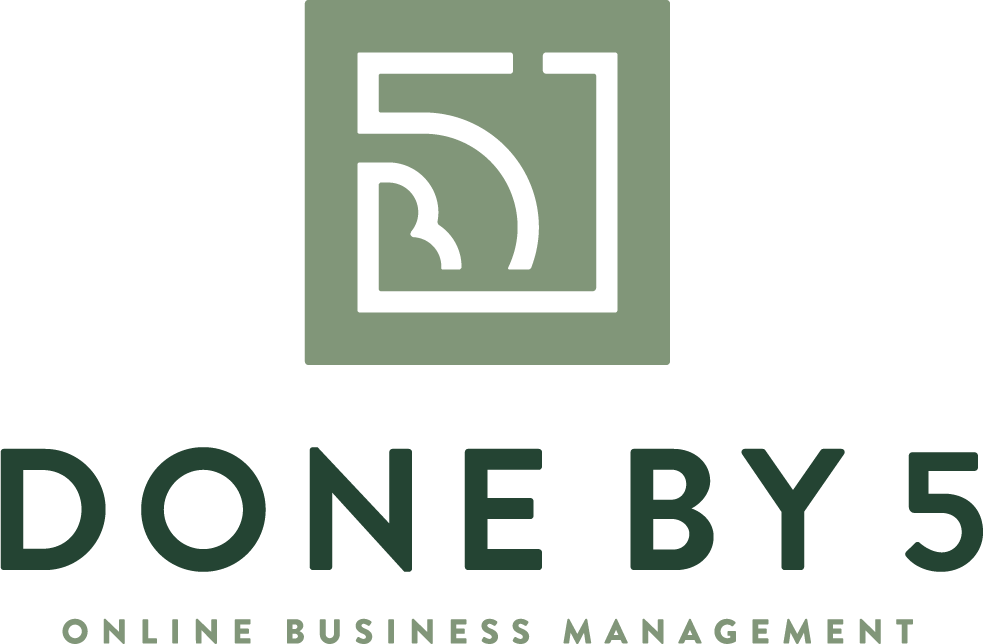Mid-Year Business Financial Checkup: A No-Stress Guide for Small Business Owners
We’re officially halfway through the year (how did that happen?!). Whether you’re feeling on top of your business finances or slightly buried under receipts and to-dos, now is the perfect time to pause and do a simple mid-year check-in.
This isn’t about judgment. It’s about awareness, clarity, and feeling a little more empowered with your numbers — so you can make the second half of the year smoother, more aligned, and maybe even more profitable.
Here’s a simple mid-year financial checklist to help you get back in the driver’s seat.
✅ Mid-Year Business Financial Checklist (with Notes!)
1. Categorize All Expenses and Record All Income
Make sure all your business expenses and income are entered into your bookkeeping software (QuickBooks, Wave, etc.) and properly categorized.
👉 Pro tip: If you're behind, just block 30–60 minutes to chip away at one month at a time.
2. Reconcile Your Accounts
Reconciliation means making sure your records match your actual bank and credit card statements.
👉 This helps catch any double entries, missed charges, or fraud — and keeps your books accurate for tax season.
3. Review Outstanding Invoices + Bills
Take a look at:
Unpaid invoices (money owed to you)
Unpaid bills (money you owe)
👉 Follow up with clients who haven’t paid and schedule payments for any bills that are due. It’s about clearing space and getting current.
4. Run Your Financial Reports
Pull up your:
Profit & Loss Statement
Balance Sheet
Cash Flow Report
👉 These reports give you insight into how your business is performing — and help you make decisions from a place of knowledge, not just vibes.
5. Compare Budget vs. Actual
Look at what you planned to spend or earn vs. what actually happened.
👉 This is such a powerful way to spot patterns, leaks, or surprises. Adjust your Q3/Q4 plans based on what’s realistic now — not what you hoped in January.
6. Organize Receipts and Documents
If you’ve been collecting paper receipts in your purse, glove box, or junk drawer — no judgment.
👉 Start scanning them into your digital filing system or take photos using your accounting app. Keep things in folders by month or category for easy access at year-end or during audits.
7. Mark Tax Deadlines on Your Calendar
Check in with your CPA and mark:
Estimated tax due dates
Sales tax filing deadlines
Annual reports or business license renewals
👉 Trust me — your future self will thank you.
8. Update Business + Tax Records
Make sure your business info is up to date:
W-9s and 1099s (for contractors)
Employer ID Numbers
Business licenses and insurance policies
👉 This is also a good time to check that your tax preparer or bookkeeper has everything they need so you’re not scrambling later.
9. Project Your Cash Flow
Think about the next 3–6 months:
What are your upcoming expenses?
Do you have enough incoming revenue to cover them?
Do you need to set aside a cushion for slower months?
👉 Even a simple spreadsheet can give you peace of mind here.
💌 Want This Checklist as a Free Printable?
I made a super simple version you can keep in your planner, file folder, or tape to your wall.
Grab it here 👉 Download the Mid-Year Business Financial Checklist
✨ Final Thoughts
This check-in isn’t about perfection — it’s about clarity. Think of it as clearing the weeds in your business so the good stuff can grow. You don’t have to do it all in one day, and you don’t have to do it alone.
Let me know which item you’re starting with — and if you need support, this is exactly the kind of stuff I help clients untangle every day.
←BACK
DON’T MISS THE LATEST POSTS
BUSINESS
How an OBM Can Transform Your Online Business Operations →
PRODUCTIVITY
Why Every Online Entrepreneur Needs an OBM →
TOOLS
Scaling Your Online Business: A Guide to Working with an OBM →
BUSINESS
How an OBM Can Help Your Online Business Thrive →




